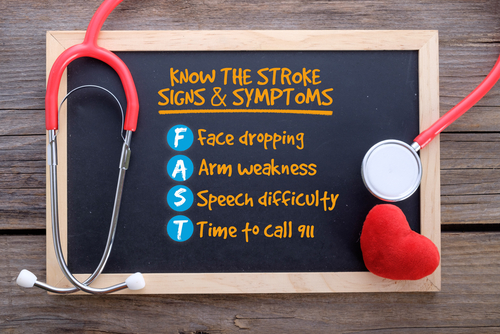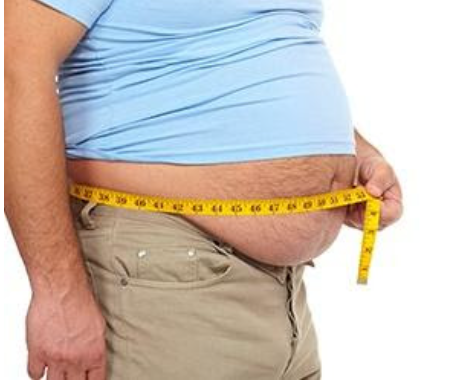Stroke affects about 800,000 people in the United States every year and is the third leading cause of death. Strokes occur when the brain stops receiving life-giving blood and the cells begin to die. Once this process begins, the abilities of those cells are lost.
The ramifications of strokes vary. Some people make full recoveries, while others end up with temporary or permanent muscle weakness, paralysis, and even an inability to speak. Still others can experience so much brain damage that they lapse into a coma and even die.
How to Identify a Stroke F-A-S-TFar too many people ignore the signs of stroke because they doubt whether their symptoms are real. But when dealing with a life-threatening illness, particularly strokes, time is of the essence. The National Stroke Association has created an easy acronym to help you remember, and act on, the signs of a stroke: F.A.S.T. · Facial drooping · Arm weakness · Speech difficulties · Time to call for emergency services Other signs of a stroke include:
|
Do These 6 Things to Prevent a Stroke
Many strokes can be prevented with lifestyle changes. Here are 6 things you can do to prevent a stroke:
1. Lose Weight
Obesity, as well as the complications that go with it such as diabetes, raises a person’s odds of having a stroke. Even losing as little as 10 pounds can have a significant positive impact on your risk of stroke.
Commit to eating more nutritious whole foods and cutting out processed foods that are loaded with fat and sugar.
2. Exercise
While we’re on the topic of losing weight, let’s talk about the importance of exercise. Not only does moving your body more help you lose weight, it can also lower your blood pressure. But exercise also stands (on its own two sneakered feet) as an independent stroke reducer.
Here’s what’s important: partaking in moderate exercise four to five days a week. Here’s what’s not important: working out so hard you can’t move the next day.
Exercise should be fun, otherwise you’re not going to keep doing it.
If you like to swim and have access to a pool (or other body of water), then swim. If you like riding your bike with your kids or grandkids, ride your bike. Take a walk around the neighborhood, do some yoga… it doesn’t matter. Just move your body and commit to doing it four to five times a week.
3. Get Your Heart Checked Out
Are you one of those people who live with pesky heart palpitations? Well those pesky palpitations can be dangerous.
Atrial fibrillation is a form of irregular heartbeat that causes clots to form in the heart. Those clots can then travel to the brain, producing a stroke. Atrial fibrillation can make a person five times more likely to have a stroke.
If you suffer from an irregular heartbeat, get it checked out with your doctor. They may find it necessary to put you on blood thinners such as high-dose aspirin or warfarin (Coumadin.)
4. Treat Diabetes
You probably know that diabetes leads to high blood sugar levels and that, over time and if left unchecked, these levels can damage and destroy your blood vessels. But did you know that damaged blood vessels are more likely to form blood clots?
Your mission, should you choose to accept it, and I know you do, is to eat healthy and keep your blood sugars under control. If you have already been diagnosed with diabetes, be sure to monitor your blood sugars closely and stick to your treatment plan.
5. Quit Smoking
Smoking causes the perfect storm for your blood to form clots. It not only thickens your blood – not good – it increases the amount of plaque buildup in your arteries as well. Along with cleaning up your diet and exercise, quitting smoking is one of the most powerful ways you can significantly reduce your risk of stroke.
6. Lower Your Blood Pressure
One of the biggest contributors to stroke is high blood pressure. According to Dr. Natalia Rost, associate professor of neurology at Harvard Medical School and associate director of the Acute Stroke Service at Massachusetts General Hospital:
“High blood pressure is the biggest contributor to the risk of stroke in both men and women. Monitoring blood pressure and, if it is elevated, treating it, is probably the biggest difference women can make to their vascular health.”
The ideal blood pressure is 120/80 or less.
So how can you reduce your blood pressure?
- Eat a healthy diet. Consuming too much salt, sugar, and fat is a no-no, but you know this because you religiously read this blog!
- Quit smoking (hey, where did we hear that before?)
- Eliminate stress from your life.
But if you’re looking for a COMPLETE blood pressure system, one that has helped thousands of Americans take control of their blood pressure and overall health – I’d recommend The Blood Pressure Solution.
It’s written by a doctor that has been helping people naturally lower their blood pressure WITHOUT prescription medication for years, and she has finally released her system to the public.
Here’s how you can naturally, safely and PERMANENTLY lower your blood pressure – Click Here.
 Validating...
Validating... 





2 Comments